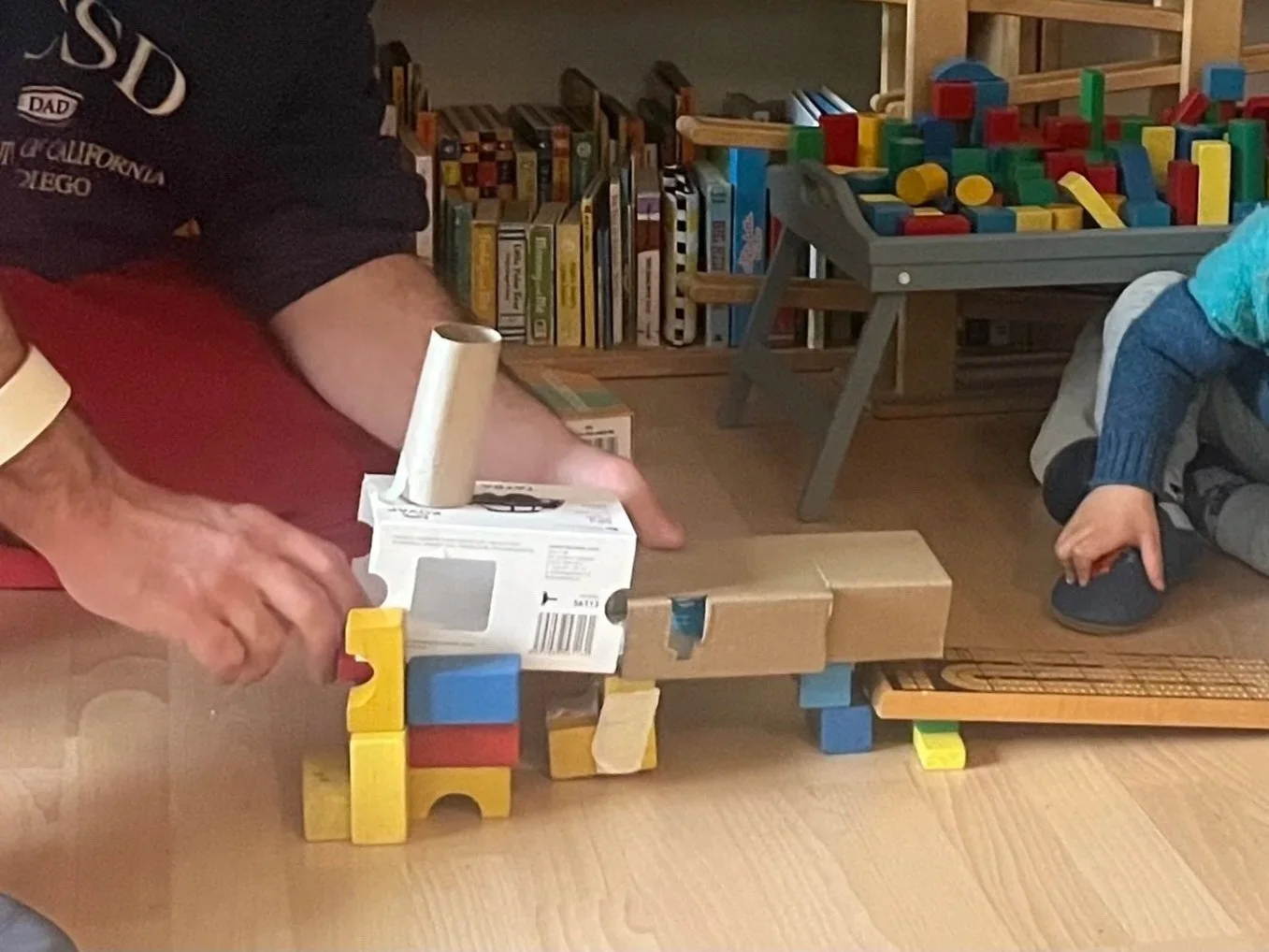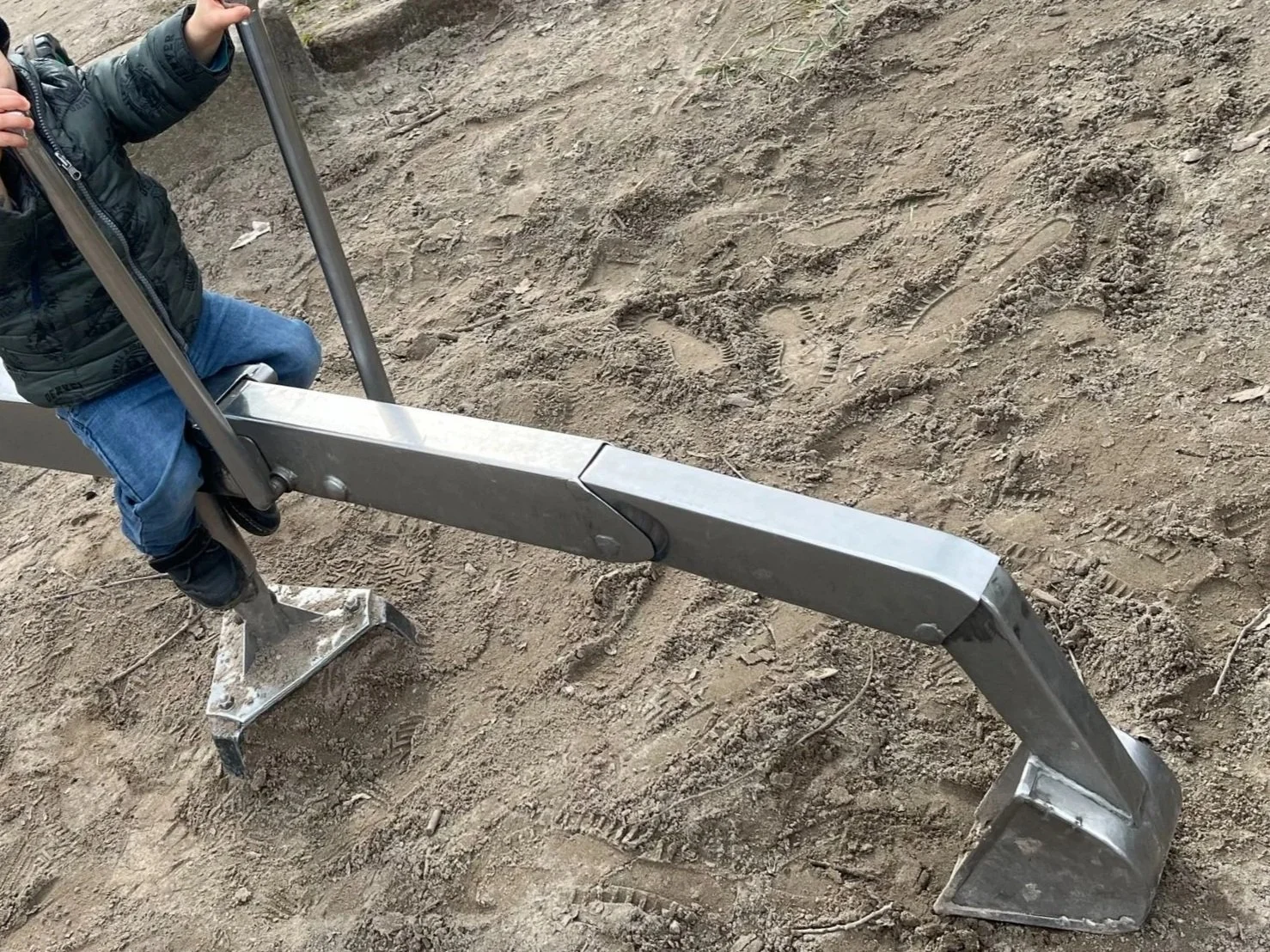More Toddler Tinkering Dispatches
Over the past years I’ve been trying out lots of small scale experiments with tinkering projects alongside my young son. It’s been really interesting to see what tools, materials and ideas make sense for him to explore and how coming back to these projects affect his thinking. At this point he’s really fascinated with questions like “how is it working?” and “can we fix it?”. I’m practicing following his lead and co-designing explorations that lead to new and unexpected ideas. Here are a few recent projects and ideas that we’ve been exploring together.
Remixing Paper Cars
We got a book of paper cut-out cars, trains and planes that can be folded and taped together as a present and he’s really interested in building the models. One of the things that we have been trying is to add to the kits and move beyond more step-by-step projects by adding new materials and more complex ideas. Some of the things that we’ve tried with these paper constructions include adding working wheels, LED lights to the police car and a moving linkage on the locomotive.
Recycled Ramps
Another possibility for taking existing toys and games further is by combining different elements together and adding in more recycled materials. We’ve been playing around with extensions to the standard wooden block set and one of the most fun recent creations has been a stunt car ramp built on the floor. This idea can be returned to again and again with new materials.
Large Scale Painting
Another way that we’ve been experimenting with activities is by changing size and scale. We love painting and coloring in a standard sized notebook but it gets more exciting with watercolors and a huge piece of paper. I love how painting can become a whole body experience as he tries to jump and shake the brush to affect the desings. For one recent project, we traced his body on a large sheet of paper, cut in out and then painted in the outline.
A Big Tube
Another touchstone for letting tinkering projects seep into to daily life is by letting materials take the lead. After finishing the big roll of white paper for our paintings (and other art machine projects), the long cardboard tube became a launching point for another long-term exploration. We tried sending different objects down the tube including balls, crayons, cars and mini-figures. Then there was a lot of experimenting around how to prop up the tube on chairs and stools (or even balanced on our bodies).
Wooden Robots
We got to visit another workshop (technically for a bit older kids) ran by the Experinauten at the Guten Leben Fest here in Freiburg where they introduced the idea of making wooden robots. He is utterly fascinated by all the woodworking tools and materials and I love this simple prompt because it can grow and change as his experience and fine motor skills develop. I can imagine a whole series of wooden robot friends that get more and more complex over time as the possibilities for ways of adding or connecting parts expand.
Linkage Construction Site
A final in-progress project is related to one of our favorite themes recently, construction sites and all of the giant machines! Here in Germany, there are sometimes mini metal excavators available to test out in playground sandpits and we also found a more simple version on a local front porch that made the mechanism even more visible. This idea inspired me to experiment with other materials to make our own version. So far I collaborated with my friend and colleague Claus Schneidereit to build a metal prototype and constructed a quick iteration out of cardboard. We’re planning to continue to explore this idea in the coming weeks.
These are just a few of the prototypes that we’ve tried together. Tinkering with a toddler can be a wonderfully rewarding experience and I’m constantly surprised by the connections that he makes and the ways that the ideas develop over time. I’ll keep sharing my experiments here and I’d love to hear more about what other people are trying for early childhood tinkering projects.












